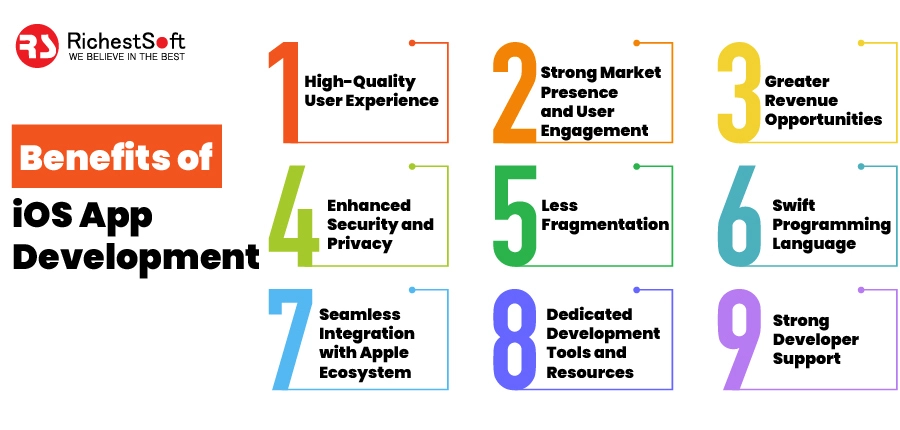
What are the best front-end development languages, tools, and technologies to use in 2020 to build outstanding software and web applications?
Front-end development is crucial for any business application to succeed. You could have the most structured back-end programming strengthening your application, but front-end is what people see and mostly care about.
But new front-end technologies are being introduced faster than ever and it is easy to get overwhelmed just by the sheer number of technologies available.
So we have rounded up the best front-end development tools and technologies for you to look out for in 2020.
Leading Mobile and Web Front-End Development Technologies
1. React for a Responsive Web Front-End Development
Website: https://reactjs.org/ | Git Repo: https://github.com/reactjs
React is an open-source front-end library licensed and released under MIT in 2013. React is probably the most used front-end technology and has greatly improved with every update.
The library is maintained and supported by the social media giant, Facebook.
React’s code is split into components to facilitate code reusability and fast debugging. The applications built on React are highly responsive and amounts for SEO friendliness. The data binding also ensures a solid code structure and a seamless app performance.
Airbnb, Dropbox, BBC, Facebook, New York Times, and Reddit are some of the prominent websites and web apps built with React.
2. Angular Front-End Development
Website: https://angular.io/ and https://angularjs.org/ | Git Repo: https://github.com/angular
AngularJS is a JavaScript front-end development framework originally developed in 2009. It was licensed under MIT as open-source and since that time, AngularJS has gained immense popularity for its advantages.
Angular is maintained by the search engine powerhouse, Google, and supported by a huge community of developers.
Angular uses MVVM architecture making it easy to maintain and refactor the codes. The component-based architecture further ensures a higher quality of code and eases testing.
The JavaScript front-end framework is consistent, readable, and its apps are performing well in various industries.
Netflix, Upwork, IBM, Goodfilms, and Freelancer are some of the renowned websites built with Angular. Gmail, Paypal, and The Guardian are some of the well-known applications built with Angular.
3. Vue.js Web App Front-End Development
Website: https://vuejs.org/ | Git Repo: https://github.com/vuejs
Vue.js is a JavaScript framework released in 2014 and licensed as open-source under MIT. The front-end development technology is highly promising and is expected to lead the front-end development.
The framework maintained by its creator Evan You and a team comprising members from various companies like Netguru and Netlify.
Vue.js uses MVVM architecture and is extremely lightweight making it easy to implement. Some of the websites and apps built with Vue.js are 9gag, Nintendo, GitLab, Behance, and Laravel. The websites indeed exhibit the prowess of the framework.
4. Elm for a Reactive Web Front-End Development
Website: https://elm-lang.org/ | Git Repo: https://github.com/elm
Appeared in 2012, Elm is a domain-specific language to create web browser-based graphical user interfaces. Licensed under BSD 3-clause, Elm emphasizes heavily on performance and usability.
Elm is purely functional; meaning, the code is decoupled and it is easy to rewrite and make changes. Elm’s variables are also immutable; makes the code concrete and improves the performance of the website.
Further, the design is highly reactive and gives the users a clutter-free and seamless experience.
Elm is yet to spread widely, but its official website is a fine example of implementation.
5. Flutter for Cross-Platform Mobile and Web Front-End Development
Website: https://flutter.dev/ | Git Repo: https://github.com/flutter
Flutter is a cross-platform and open-source UI software development toolkit released by Google to create beautiful and responsive User Interfaces.
It is licensed under BSD clause-3 and was released in 2017 for wide incorporation. Flutter is built on Dart and puts the language’s advantages to good use in the applications.
Flutter uses the combination of widgets to create UI that is visually enticing and highly reactive. And it doesn’t have any compatibility issues as the widgets are a part of the application.
Flutter’s hot reload increases the speed of the development and makes it simple. Hot reload applies the code changes to the application without having to reload.
The performance is also top-notch as there is less mediation between the platform and the app.
Google ads, Alibaba, Birch Finance, Cryptograph, and Hookle are some of the applications powered by Flutter.
6. Ionic for Cross-Platform Front-End Development
Website: https://ionicframework.com/ | Git Repo: https://github.com/ionic-team/ionic
Ionic is an open-source front-end framework to build beautiful and fast cross-platform apps compatible with iOS, Android, and the Web using a single codebase.
Ionic was released in 2013 under the MIT license and maintained by the developers of Drifty Co. It is also backed by a global community of around 5 million developers.
Ionic is simple and leans towards speed, cost-efficiency, and less maintenance to help businesses grow.
The National Health Service, GE Transportation, Market Watch, and Amtrak are some of the examples of business built on Ionic.
7. Bootstrap CSS Framework
Website: https://getbootstrap.com/ | Git Repo: https://github.com/twbs/bootstrap
Bootstrap was released on 19th August 2011 under MIT license. It is an open-source CSS framework to build dynamic websites and web applications. It is built by Mark Otto at Twitter as a framework for consistency.
Bootstrap, as a front-end development framework, allows websites to be highly responsive with its fluid grid layout and gives a mobile-ready platform perfect for all the devices.
Bootstrap ensures front-end development consistency for developers and designers. The CSS framework has also got the support of a strong community.
8. TypeScript for Web Front-End Development
Website: https://www.typescriptlang.org/ | Git Repo: https://github.com/microsoft/TypeScript
TypeScript is also an open-source programming language with Apache License 2.0. It was developed and maintained by Microsoft and shares the semantics with JavaScript.
TypeScript comes with a good stack of advantages for front-end development. The apps built with TypeScript are super scalable and will assist greatly in the long run. They are also faster and quick to respond.
With TypeScript, there are fewer bugs to worry about, the app is easy to maintain and codes can be refactored without any complications.
9. Impact of Chrome Development Tools on Front-End Development
Website: https://developers.google.com/web/tools/chrome-devtools | Git Repo: https://github.com/topics/developer-tools
Chrome DevTools are built directly into the Google Chrome browser and can be used to render designs and changes on the go.
As a front-end development tool, It can inspect and return the errors in code for faster debugging. Chrome Developer Tools can be effectively used to analyze how the design interacts with the network and if everything is in the allocated location.
It can also greatly reduce the time required to test and render the front-end leading to faster deployment.
10. React Native Cross-Platform Mobile Front-End Development
Website: https://facebook.github.io/react-native/ | Git Repo: https://github.com/facebook/react-native
React Native was announced in February 2015 and was released as open-source under MIT License.
The front-end development framework was created by the social media giant, Facebook. It is the optimal cross-platform development framework delivering a superior app performance.
The component-driven front-end technology makes it easy for the developers with code reusability and testability Hot reloading further increases the speed of development by reducing the waiting time to view the changes.
React Native also has a huge community support and is updated regularly to add more features.
11. Visual Studio Code Source Editor
Website: https://code.visualstudio.com | Git Repo: https://github.com/microsoft/vscode
Visual Studio Code is a source code editor released in April 2015 by Microsoft under MIT License.
Visual Studio Code empowers developers to be highly productive by highlighting the syntax, matching the bracket, selecting the box, and many more. It supports IntelliSense code completion, code refactoring, and semantic understanding.
The source editor supports hundreds of languages and has advanced debugging features to assist the developers to build effectively.
Not to mention, the Visual Studio Code is also customizable to make it easy for developers to use the editor.
12. Tailwind CSS Framework for Web Front-End Design
Website: https://tailwindcss.com/ | Git Repo: https://github.com/tailwindcss/tailwindcss
Tailwind CSS is a highly customizable CSS framework released on 1st November 2017 under MIT license.
Tailwind CSS framework is easy to learn and the developers can work faster as it provides all the tools required to build any custom CSS.
The framework’s built-in design system also allows assists the front-end developers in creating a responsive front-end.
13. Foundation for Mobile-First Front-End Development
Website: https://foundation.zurb.com/ | Git Repo: https://github.com/zurb/foundation-sites
Foundation is an open-source front-end framework released under MIT License in 2011. The framework is maintained by ZURB and has the support of a huge community.
Foundation is highly customizable and provides a responsive grid, HTML and CSS UI components, templates and other UI elements to tailor unique applications.
The framework follows the mobile-first approach, that is, you can build your application for smaller devices with bare minimum code. And as the devices get larger, you can add complex layers to make your app flexible and apt.
This speeds up the development and ensures the right implementation of the designs.
Foundation is incorporated in Hp, Adobe, Amazon, EA, National Geographic, Pixar, Mozilla, Ford, and Disney among other companies.
Bottom Line
Front-End Technologies curated in this blog are some of the best with huge communities backing them.
And the success of the applications built integrating the technologies stands as a testimony for their potential.
We have worked with various front-end technologies and understand that every technology has its own set of advantages and disadvantages. So analyze carefully before choosing the right front-end technology for your development.
Or you can ring us up and take advantage of our expertise.
Source link



















Leave a Reply